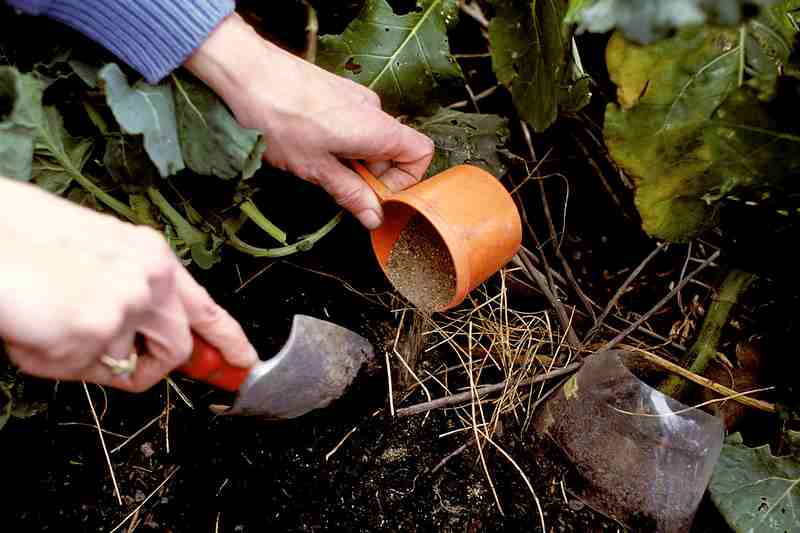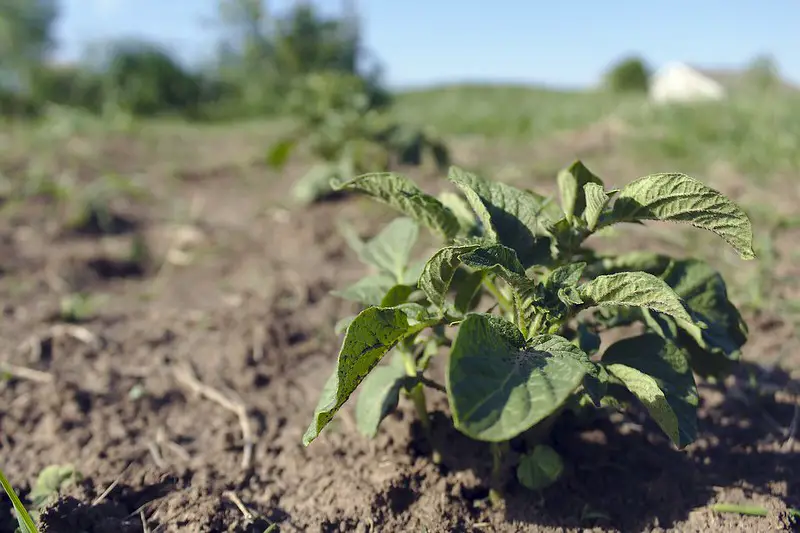We use affiliate links to run our site. When you buy through links on our site, we may earn an affiliate commission, without any added cost to you. Learn more
Potatoes are one of the most versatile crops in terms of growth. They thrive in almost any climate with almost any kind of soil. But one thing you must care about is fertilizing your potatoes.
In our earlier post, we discussed how to prepare the right growing soil for potatoes and in this post, we are going to discuss potato fertilizers and how to use them to increase your potato yields.
So let’s start…
Essential Nutrients For A Potato Plant:
While potatoes can and do grow in nutrient-poor soil, those plants won’t yield much. That’s because A potato plant needs quite a lot of different minerals to grow and thrive. Although most of them are micronutrients.
Other than nitrogen phosphorus and potassium a potato plant will need sulfur, calcium, magnesium, iron, manganese, molybdenum, copper, boron, zinc, etc.
One of the major problems with using commercial fertilizers is most of them will only have NPK in them. So, you have to add trace elements additionally. Keep this in mind when you add commercial fertilizers to the soil.
Do A Soil Test First:
Fertilizer requirements for potatoes also differ among geographical regions. Some areas are more enriched with phosphorus or sulfur so you need to adjust the amount of fertilizer.
Always do a soil test before applying fertilizers. The test will precisely tell you how much nutrients the soil has currently and how much fertilizer you have to add.
Usually, you can add NPK at a 1:1:1 or 1:2:2 ratio unless the soil testing report tells you otherwise. You can easily get these fertilizers from gardening centers on buy them online.
Farmers need to use nitrogen fertilizer for their crops because they don’t get enough from the soil. The problem with nitrogen is that it can get washed away in the rain.
So, don’t water the fields too much after applying nitrogen fertilizers, but in case there are heavy rains, recharge the soil with nitrogen boosters.
How To Apply Potato Fertilizers:
Fertilizer is an essential element in your yard’s gardening cycle. By merely adding fertilizer you can enrich the quality of your soil and give your plants a boost!
Generally, you will add fertilizers to your soil before planting the seed potatoes. You can either directly mix the fertilizer with the soil with a rake or a shovel. Or you can use the fertilizers in a band, 3 inches to the side and 1 inch below the seed pieces.
Make sure you don’t put any fertilizer on top of the seed potatoes, or directly below. This can burn the roots. Spread it evenly, and create a nutrient-rich environment for your potato plants.
When your plants are about 6 inches tall, you can put more fertilizer beside the rows. Don’t put as much as you did at first, use half the amount you put on before.
Don’t forget to cover the fertilizer with soil otherwise most of the nitrogen in the fertilizer will be lost through evaporation.
Apply the Right Amount of Fertilizer Depending On The Age of Your Potato Plant:
The fertilizer requirement of your potato plants is not always the same. It varies depending on the growth stage of the plant.
For the first two months, a potato plant will need lots of nitrogen. This is because in this period the foliar part of the plant develops rapidly.
From the 2nd month onwards the plants will need more potassium as they start to produce tubers. This will continue till 2 weeks prior to harvesting.

Make Your Own Potato Fertilizer:
Making your own potato fertilizers may not be as quick and easy as that of store-bought ones but it can lead to a broader sense of satisfaction.
Cottonseed meal contains between 12 percent and 20 percent nitrogen and other nutrients such as magnesium, phosphorous, and potassium.
Mix 4 pounds of cottonseed meal, with 2 pounds of bone meal, 4 pounds of sulfate, and 1 pound of kelp. and you have a great fertilizer for your potatoes.
Grow Cover Crops:
You can also improve soil fertility by growing cover crops prior to planting potatoes. They not only build up organic matter but also adds moisture to the soil. After harvesting your cover crops wait for two months before planting potatoes.
Potato fertilizers are an important part of growing potatoes at home. Keep your plants happy and they will reward you with great yields.
Healthy plants mean larger potatoes. Plus, you don’t want any of your plants to die at harvest time, do you? Here are the best potato fertilizers on the market for both home and professional use.
I hope you find some useful information in this post. You can read more useful potato-growing information here.
Amazon and the Amazon logo are trademarks of Amazon.com, Inc, or its affiliates.

Hi there! My name is Prasenjit and I’m an avid gardener and someone who has grown a passion for growing plants. From my hands-on experience, I have learned what works and what doesn’t. Here I share everything I have learned.
